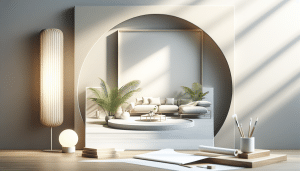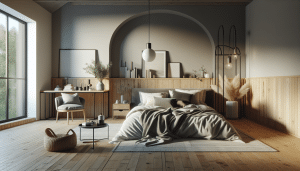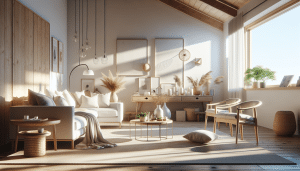Why Minimalist Living Attracts So Many People
Samantha Lee October 17, 2025
Discover the appeal of minimalist living and why this lifestyle trend is captivating more people. Explore how decluttering, simplicity, and mindful consumption can transform your home and personal wellbeing while making a positive environmental impact.
The Foundations of Minimalist Living
Minimalist living is rooted in the philosophy that less can actually mean more. It’s not just about reducing possessions, but about making intentional choices. Many individuals find that eliminating non-essential items helps create clarity in daily life. By focusing on necessities, spaces become less cluttered, allowing for greater peace of mind. The appeal lies in its practicality and emotional relief, which has driven ongoing interest in content like ‘how to declutter your home’ and ‘minimalist lifestyle tips.’ Trends show a growing curiosity about how simplicity can foster greater happiness and fulfillment in both private and shared spaces.
Embracing a minimalist mindset starts with understanding what truly adds value. People may begin with a thorough evaluation of their belongings, reassessing which items support their current goals. Letting go of redundant or outdated objects can be liberating, turning the living environment into a space that nurtures rather than overwhelms. For many, the journey towards minimalism isn’t just a one-time event but a gradual series of mindful decisions. These shifts can also extend to digital lives, reducing online clutter and distractions to enhance focus and productivity.
Minimalism’s roots span far beyond contemporary design trends. Cultures across the globe have long embraced simplicity as a way to live with greater intention. Modern movements, influenced by Japanese Zen principles and Scandinavian design, emphasize harmonious, functional environments. This cross-cultural appreciation for simplicity continues to fuel growing interest, as online searches for actionable guidance like ‘minimalist apartment ideas’ reflect a desire to create purposeful living spaces. When approached thoughtfully, minimalism offers lasting benefits that go beyond aesthetic appeal or social media inspiration.
Decluttering for Peace of Mind
Decluttering is a cornerstone of the minimalist lifestyle. The simple act of clearing out unused items helps create open, inviting environments that reduce daily stress. Studies cite that orderly spaces can lower anxiety and even improve mental clarity (Source: https://www.health.harvard.edu/mind-and-mood/declutter-your-way-to-less-stress). The process begins by identifying items that no longer serve a purpose and mindfully deciding what stays and what goes. Often, decluttering leads people to realize just how much of their physical and mental energy is tied up in material possessions.
Beyond mere tidying, decluttering is a psychological refresh. Each donation or discarded item can feel like unburdening. Minimalist practitioners recommend focusing on one area at a time: perhaps a single closet, a home office, or even just a shelf. This step-by-step approach helps prevent overwhelm and makes the transformation sustainable. The resulting spaces often encourage greater creativity, ease, and comfort—clear floors and surfaces bring both literal and symbolic breathing room.
Decluttering is also intertwined with sustainability and responsible consumption. By reducing unnecessary purchases and finding value in what’s already owned, people naturally shift toward more ethical, low-impact choices. Some choose to sell or donate excess items, contributing to the circular economy. Others recycle to minimize landfill waste. With fewer distractions, many find it easier to spend more time on meaningful hobbies or with loved ones—a benefit often cited in mental health research (Source: https://www.apa.org/monitor/2020/03/healthy-homes).
Designing a Minimalist Home
A minimalist home is defined less by what is present and more by what is intentionally left out. Neutral colors, simple lines, and unobtrusive furnishings characterize this style. Each object has a purpose, and nothing is included on impulse. The effect? Spaces feel light, airy, and easy to maintain. This approach to interior design is gaining traction, as many people search for ways to make their homes reflect a sense of calm and order (Source: https://www.archdaily.com/946376/minimalism-in-interior-design-five-manuals-of-basic-decoration).
The layout of a minimalist home often emphasizes open floor plans and multi-functional areas. Spaces are arranged to encourage easy movement, maximize natural light, and avoid overcrowding. Storage solutions, such as built-in cabinets and hidden compartments, keep essential items accessible while concealing unnecessary visual clutter. Many followers find that small changes, like rearranging furniture or reducing wall decor, can radically transform the atmosphere. The minimalist design ethos also extends to the use of sustainable materials and energy-efficient fixtures.
Bringing minimalism into the home doesn’t mean sacrificing personality or comfort. Instead, it’s about being selective: displaying meaningful art, choosing comfortable seating, or integrating plants to soften a space. Minimalism leaves room for personal expression, as every chosen item stands out rather than competes for attention. Whether in a compact city apartment or a family house, the minimalist approach scales to any context, helping residents appreciate quality over quantity and prioritize experiences over accumulation.
Financial Benefits of Minimalist Choices
One often-overlooked advantage of minimalist living is the cost savings. By intentionally purchasing fewer items, households typically divert funds away from impulse buys and unnecessary upgrades. Over time, this shift contributes to financial security, less debt, and greater freedom. For individuals or families working within a budget, adopting minimalist spending habits can be transformative (Source: https://www.consumerfinance.gov/about-us/blog/declutter-your-finances-for-clean-slate/).
Besides reducing the outflow of money, minimalist choices also optimize value from existing possessions. Many adherents develop a deeper gratitude for things they already own, whether it’s a reliable appliance or a favorite jacket. By buying less, it’s possible to afford higher-quality goods that last longer. Mindful consumption becomes a pathway to living more sustainably, aligning with the growing appeal of topics such as ‘budget-friendly minimalist tips’ and ‘minimalism for families.’
Minimalist living’s financial impact stretches into future planning as well. Less clutter means reduced need for storage or larger living spaces—this can help people downsize, move more easily, or save for travel and experiences. Those who consistently practice mindful purchasing often report greater satisfaction from investing in relationships, education, or creative pursuits rather than material accumulation (Source: https://hbr.org/2016/09/how-much-of-your-stuff-is-holding-you-back).
Minimalism and Emotional Wellbeing
There is growing consensus that minimalist living offers mental health benefits. Cluttered spaces can contribute to feelings of overwhelm or anxiety, while organized, serene environments invite calm. Research has linked a tidy home to improved mood and focus (Source: https://www.ncbi.nlm.nih.gov/pmc/articles/PMC4786191/). When daily routines are simplified, time and mental energy can be redirected toward self-care or hobbies.
Practicing minimalism is about letting go of what no longer adds value, both physically and emotionally. By releasing possessions tied to past identities or situations, many individuals experience a sense of renewal. This emotional freedom can be especially powerful during life transitions, such as moving, starting a family, or retiring. Some even incorporate mindfulness meditation as part of their minimalist journey, enhancing their ability to live in the present moment and respond flexibly to change.
Social connections often flourish in minimalist settings, too. With less clutter and distraction, it’s easier to host friends, engage in quality conversation, and enjoy shared activities like cooking or board games. The focus shifts from impressing visitors with material wealth to building authentic experiences. This sense of purpose, and the alignment between values and environment, can contribute to long-lasting happiness, reported by many online minimalist communities (Source: https://positivepsychology.com/benefits-minimalism/).
Sustainability in Minimalist Lifestyles
Minimalism and sustainability have become increasingly linked. A minimalist lifestyle naturally leads to reduced waste and lower carbon footprints, as people buy less and think critically about every purchase. Choosing durable products, repairing instead of replacing, and thoughtfully repurposing items all support environmental goals (Source: https://www.epa.gov/recycle/how-do-i-recycle-common-recyclables).
Many individuals are drawn to minimalism to live in alignment with values around environmental stewardship. Using less water, energy, and packaging aligns with the desire to protect the planet for future generations. The movement has inspired creative ideas, such as capsule wardrobes, zero-waste kitchens, and even minimalist travel, which all help illustrate how intentional decisions support bigger ecological goals.
By opting for quality over quantity, people shift toward a more conscious and responsible lifestyle. Organizations and governments increasingly endorse these principles, offering resources and incentives for reduced consumption. Whether motivated by personal values, financial savings, or a concern for the environment, this lifestyle pattern will likely sustain its influence for years to come.
References
1. Harvard Health Publishing. (n.d.). Declutter your way to less stress. Retrieved from https://www.health.harvard.edu/mind-and-mood/declutter-your-way-to-less-stress
2. American Psychological Association. (2020). Healthy homes, healthy families. Retrieved from https://www.apa.org/monitor/2020/03/healthy-homes
3. ArchDaily. (2020). Minimalism in Interior Design: Five Manuals of Basic Decoration. Retrieved from https://www.archdaily.com/946376/minimalism-in-interior-design-five-manuals-of-basic-decoration
4. Consumer Financial Protection Bureau. (2021). Declutter your finances for a clean slate. Retrieved from https://www.consumerfinance.gov/about-us/blog/declutter-your-finances-for-clean-slate/
5. Harvard Business Review. (2016). How Much of Your Stuff is Holding You Back? Retrieved from https://hbr.org/2016/09/how-much-of-your-stuff-is-holding-you-back
6. United States Environmental Protection Agency. (n.d.). How Do I Recycle Common Recyclables?. Retrieved from https://www.epa.gov/recycle/how-do-i-recycle-common-recyclables







